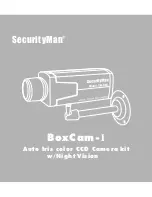
Bi-spectrum network camera
User Manual
Intelligent Analysis
Issue V 1.1
(
2022-05-07
)
77
Step 3
Set a deployment area:
Draw a line:
move the cursor to the drawing interface, hold down the left mouse button,
and move the cursor to draw a line. When you release the left mouse button, a single
virtual fence is generated.
Setting a single virtual fence:
Click a line (and the trip line turns red) to select the single
virtual fence and set its direction as Positive, Reverse or Bidirectional, or delete the
selected line. You can also press and hold left mouse button at the endpoint of a single
virtual fence and move the mouse to modify the position and length of this single virtual
fence. You can right-click to delete the single virtual fence.
NOTE
⚫
A single virtual fence is not within any deployment area, therefore, when an alarm is
generated, the trace always exists. Only when the target object moves out of the field of
view, the trace disappears.
⚫
Try to draw the single virtual fence in the middle, because the recognition of a target
takes time after target appearance on the screen and an alarm is generated only when the
object is recognized to have crossed the single virtual fence.
⚫
The single virtual fence which detects person foot as the recognition target cannot be too
short, because a short single virtual fence tends to miss targets.
Step 4
Set deployment time.
----End
6.3 Double Virtual Fences
Description
Double virtual fences refer to two lines that are set at a concerned special position within
the field of view and specify the forbidden travel direction. When the targets of specified
types (such as person or car) move along the set travel direction and cross these lines in a
certain order (line 1 followed by line 2) in pass max time, an alarm is generated.
Procedure
Step 1
Select
Configuration
>
Intelligent Analysis
>
Double Virtual Fences
to access the
Double Virtual Fences
setting interface, as shown in Figure 6-4.
















































